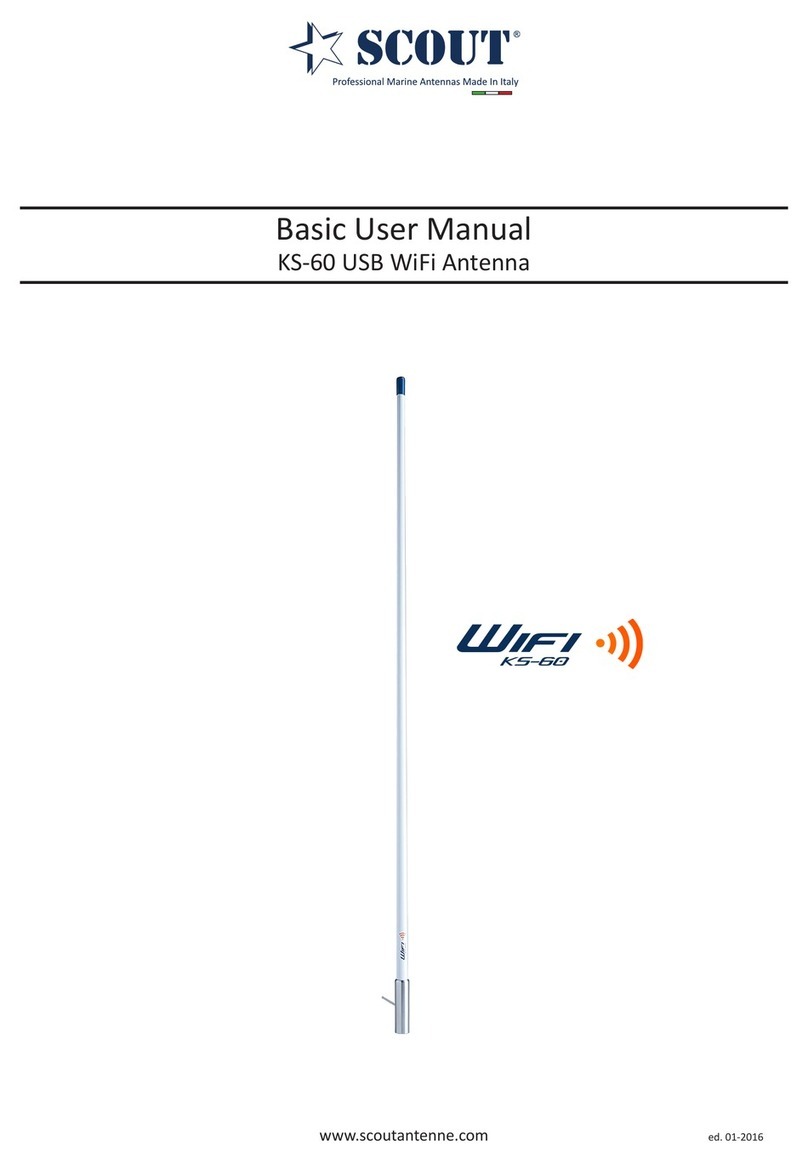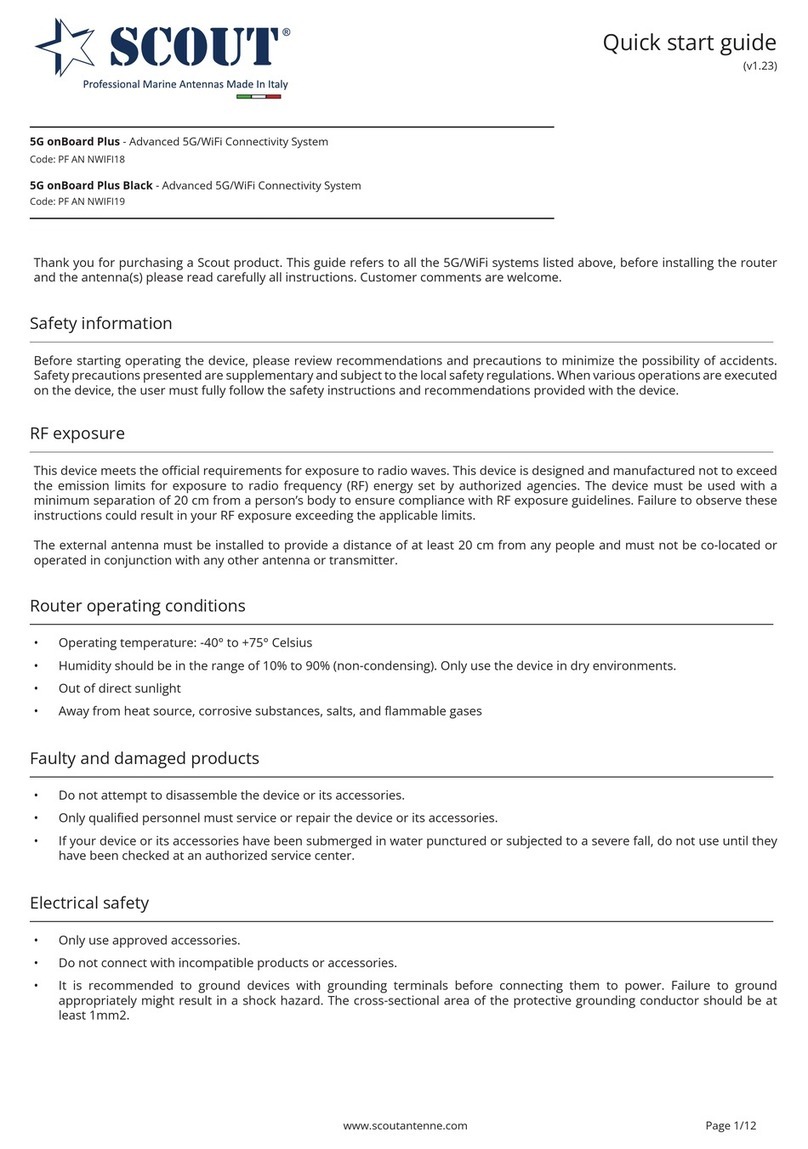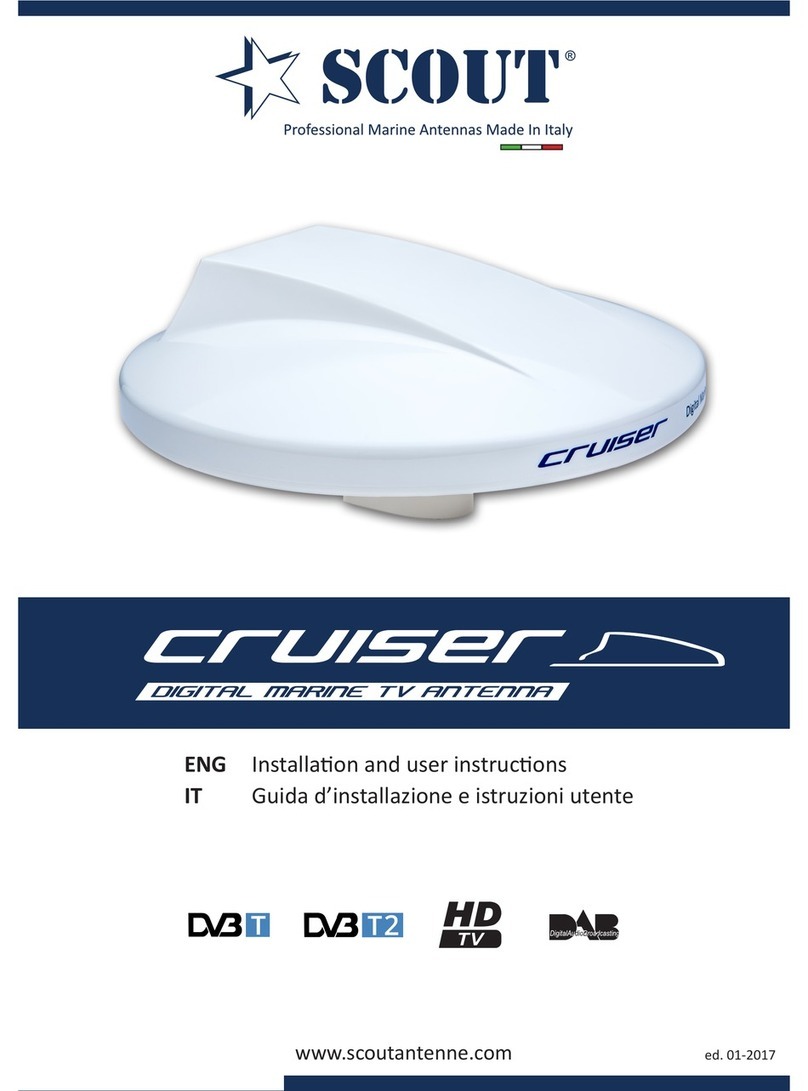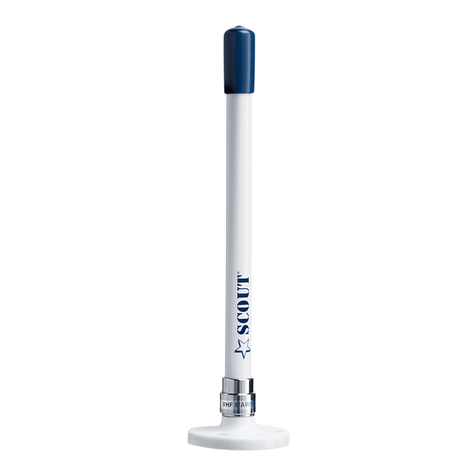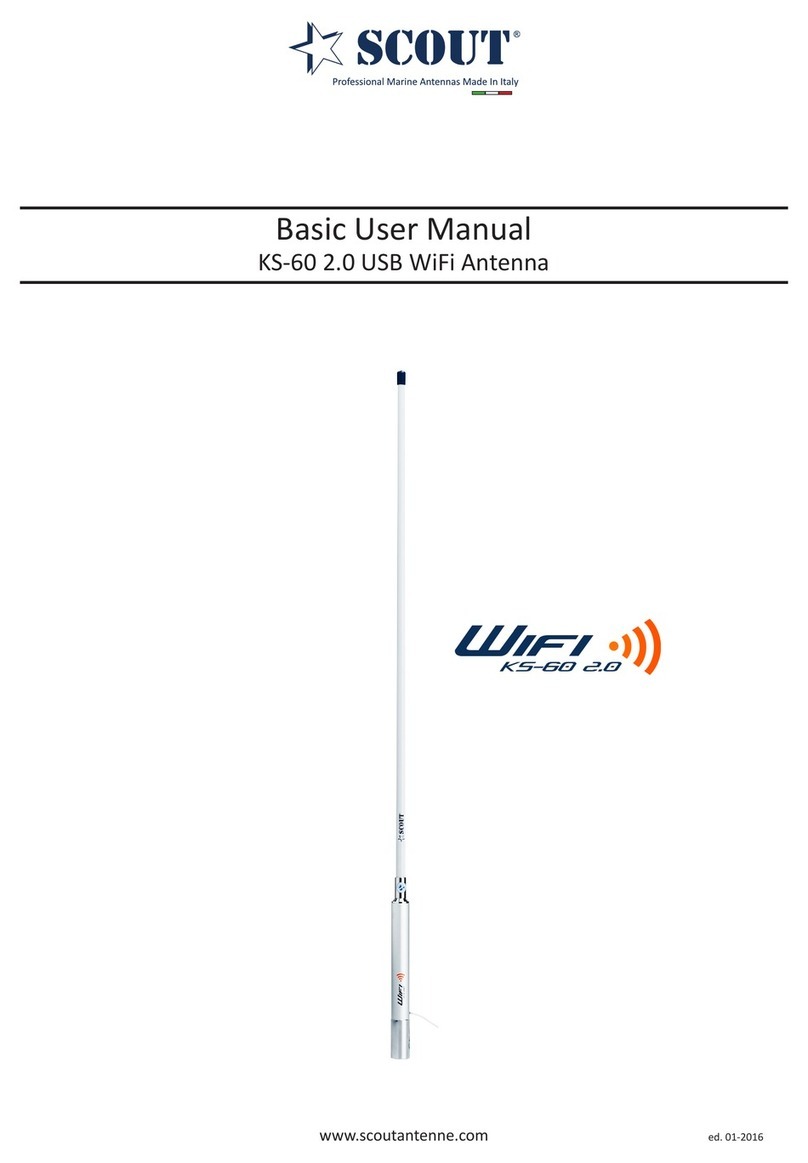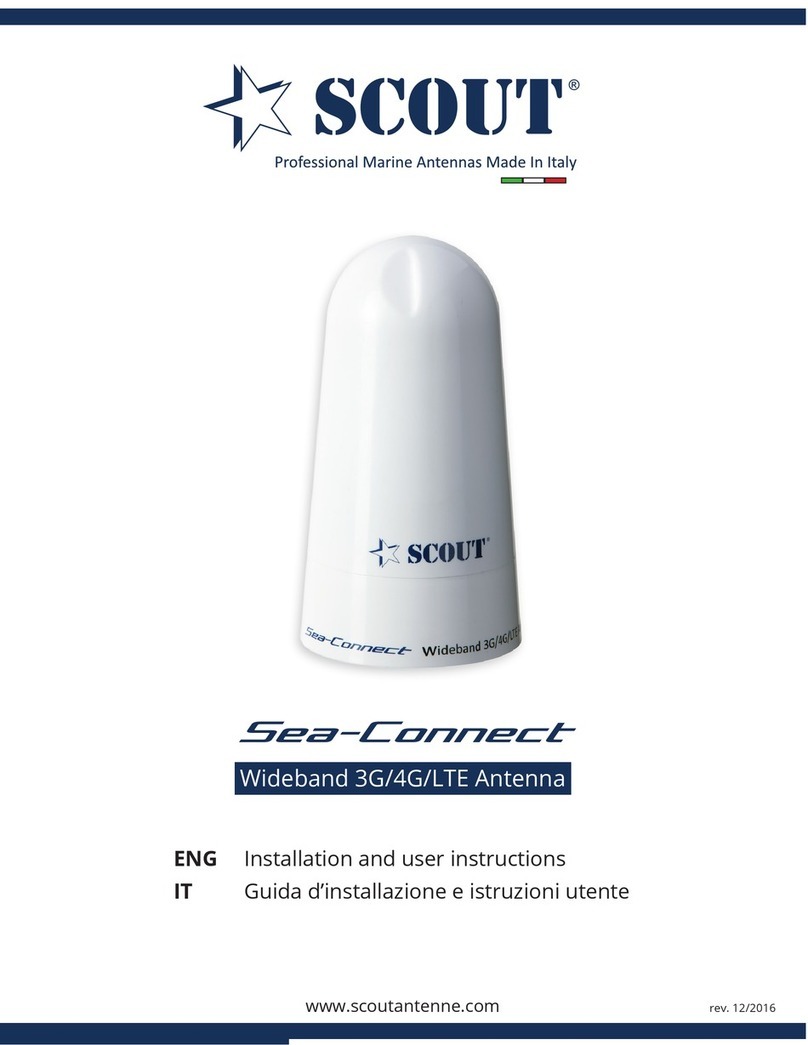NAV-6 GPS Marine Antenna
SCOUT Telecomunicazioni | Via Toscanini 148, 41019 Soliera, Italy
tel. +39 059 566650 | fax +39 059 565949 | e-mail: scout@scoutantenne.com
Technical specicaons here included may change without prior noce.
SCOUT is a registered trademark.
Reg. n. 009799602
www.scoutantenne.com
4
Professional Marine Antennas Made In Italy
Basic concept of GPS
A GPS receiver calculates its posion by precisely ming the signals sent by GPS satellites high above the Earth. Each
satellite connually transmits messages that include
• the me the message was transmied.
• satellite posion at me of message transmission.
The receiver uses the messages it receives to determine the transit me of each message and computes the distance
to each satellite using the speed of light. Each of these distances and satellites’ locaons dene a sphere. The
receiver is on the surface of each of these spheres when the distances and the satellites’ locaons are correct. These
distances and satellites’ locaons are used to compute the locaon of the receiver using the navigaon equaons.
This locaon is then displayed, perhaps with a moving map display or latude and longitude; elevaon or altude
informaon may be included. Many GPS units show derived informaon such as direcon and speed, calculated
from posion changes.
A good external GPS Antenna is the foundaon of a good GPS Navigaon system. The reasons to need an external
GPS antenna:
• For use in a vehicle where the GPS receiver cannot or will not be placed near a window.
• For use in any place that the receiver doesn’t have a good view of the sky.
• To minimize temporary loss of signal when in a vehicle in moon.
• To maintain the best possible accuracy by having a lock on the greatest number of satellites.
A GPS antenna is a device that helps boost the recepon signal to a GPS unit, whether it is a standalone unit or an
embedded unit. Oen a GPS antenna is used in a situaon where the GPS unit itself is somehow removed from a line
of sight to the sky, as in a car or a yacht, to help the GPS “see” the sky without having to be moved.
Most GPS Devices will came with an internal Antenna with limited sensivity. Also some the internal Antenna & the
GPS Receiver Module will interfere each other and lower the Posion Accuracy.












